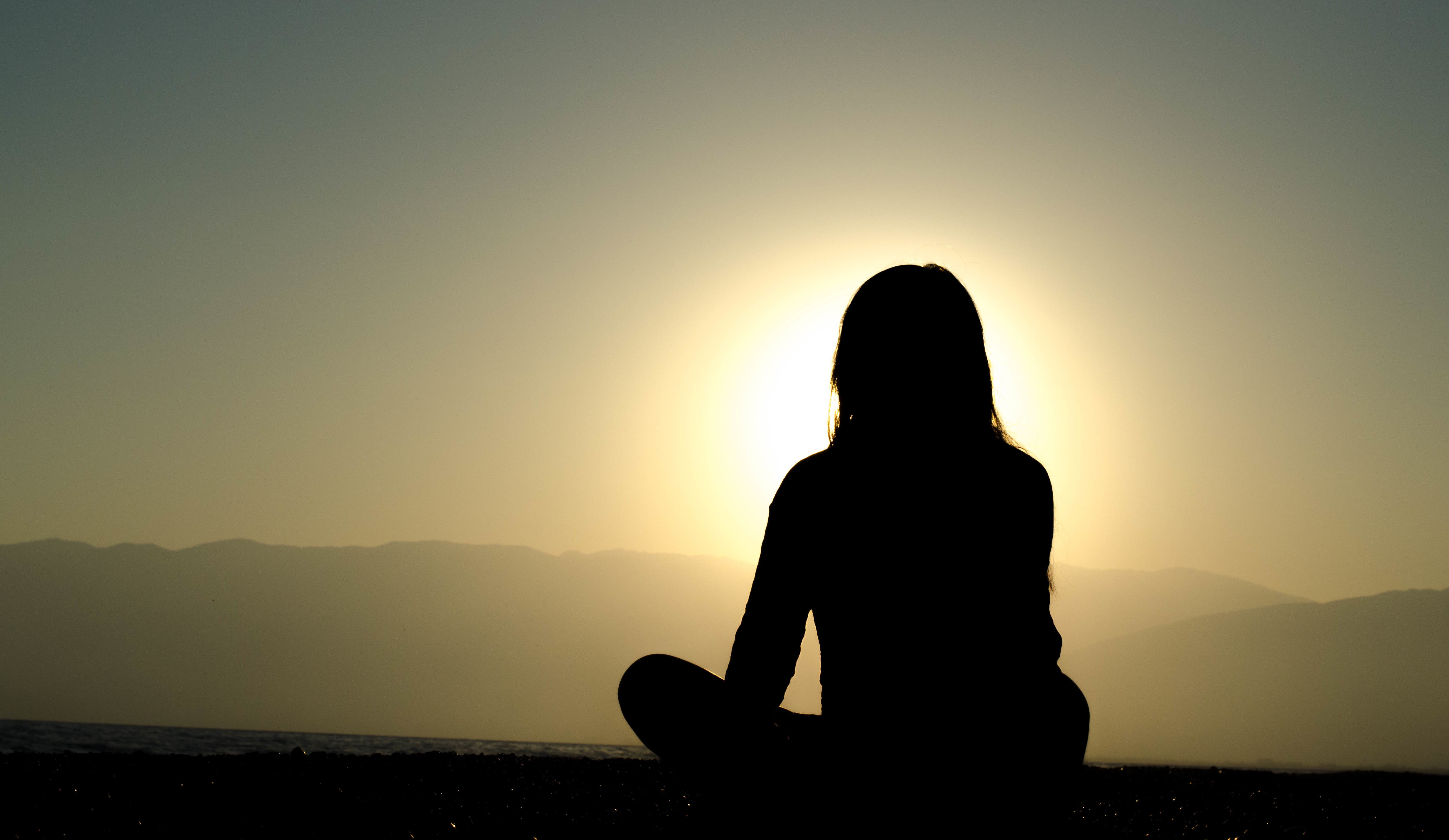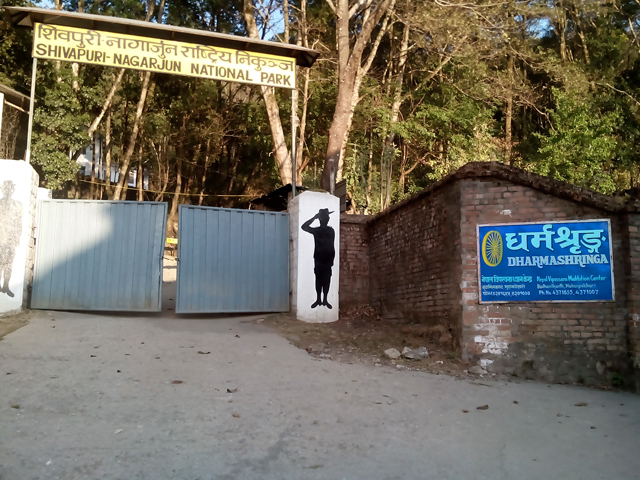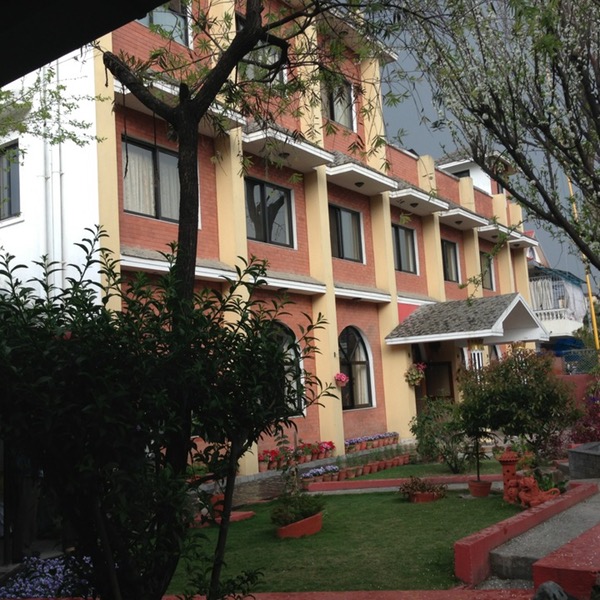
Despite its popularity and panoptic appeal, meditation is still a widely misunderstood subject. Nepal is full of places that allow people to explore various meditation techniques and delve into the philosophies that underlie them.
Here we have covered three such places that may inspire you to take meditation more seriously and bring you closer to people with similar interests.
1.
Dharma Shringa Vipassana Meditation Center

Located about nine km north of the Ring Road intersection at Narayan Gopal Chowk, this meditation center sprawls on a slope of Shivapuri Hill at an altitude of 5,200 feet. A black-topped road runs from Budhanilakantha right up to the center’s gate, so getting to the place is no problem. This center is next door to the Shivapuri National Park’s entrance gate at Pani Muhan.
Although the center looks almost like a continuation of the Shivapuri National Park, the difference becomes starkly clear when one sees how the park’s wilderness gives way to a beautifully landscaped facility that resembles a well-maintained resort. Inside, an explosion of colourful flowers greet visitors, and the well-maintained greenery along the stairs and pathways that crisscrosses the facility adds to the serenity of the place.
The entire setting makes visitors feel at home immediately and settles them down for lengthy residential retreats. The center runs a ten-day beginners’ course for meditators and several other long and short-term courses for those who have mastered the basic techniques. There are several meditation halls and residential quarters, and a large stupa that houses several isolated meditation cells. The main meditation hall can seat up to 250 people at a time and the stupa has 84 individual meditation cells.
Vipassana meditation has three phases: Anapana, Vipassana and Metta. During Anapana, the natural flow of breath is observed to improve concentration. During Vipassana phase, body sensations like heat, cold, itching, prickling, tickling, pain are observed. Metta, the last phase, emphasises praying for all with a pure mind and body. The whole technique hinges on the central idea that our reactions to stimuli, from outside or within us, is pointless because everything is anicchha or impermanent. Knowing this by experience through the practice of meditation bolsters equanimity and sets the meditator on the path of liberation.
To attend a ten-day course at Dharmashringa, contact Nepal Vipassana Center’s city office at 4250581, 4223968 or visit www.np.dhamma.org. To know more about worldwide Vipassana centers log on to www.dhamma.org.
2.
Shivapuri Baba Ashram

This ashram is dedicated to a little-known, yet highly revered, Hindu ascetic, Shivapuri Baba. (He was named after the Shivapuri Hill, where he lived for years in a hut before moving down the Valley floor). As per various claims, he lived until the age of 130 or 140, and left the body willingly in full consciousness in 1962. The ashram is sequestered in the Dhrubasthali forest, an extension of the Mrigasthali forest on the hillock east of the Pashupatinath Temple.
Although accessible after a short walk across the road from the Tilganga Eye Hospital and a short climb up a forested knoll, the ashram is hidden from sight. The forest you need to pass through to reach the ashram is dense enough to make you feel uneasy if you are hiking alone, but in a group you feel absolutely no fear and the greenery, and hillocks all around you make the place look like an ideal picnic spot.
It is quite likely that the moment you step into the clearing where the one-story, hut-shaped ashram stands, your everyday self will melt away and silence itself into a seeker. Even the most restless souls wouldn’t mind spending some time in meditation after reaching the ashram. For serious meditators – and I have heard this from many of them – the spiritual pull is unmistakable there.
One of the things you have to bear in mind while going to the ashram is that a huge population of monkeys hangs around the place. They won’t pay you any attention if you let them be and it is best not to carry any edible item openly. Although Shivapuri Baba made no effort to establish a cult or commune, he emphasised on maintaining physical, mental and spiritual discipline through right living for the realisation of the higher self.
The ashram is open to all and it is the right place for anyone one who wants to spend their morning or daytime in quiet contemplation. Visitors are not permitted into the premises of the ashram after 6 PM.
3.
Yogoda Satsanga Meditation Society, Kupandole

Despite busy roads and dense settlements all around, this place is surprisingly peaceful. Located behind Gurudwara, the Sikh shrine in Kupandole, the center was established by the disciples of Paramahansa Yogananda to practice and propagate the teachings and techniques of Kriya Yoga.
The Kriya Yoga system combines several stages of pranayama, mantra (chantings), and mudra (asanas) to rapidly accelerate spiritual development and engender a profound state of tranquility and what the practitioners call the ultimate state of God-communion. Rediscovered and passed on by latter-day sadhus since the mid-19th century, the concept is said to resemble the Raja Yoga of Patanjali and is mentioned in the Bhagavad Gita.
Although the centre is built on a small piece of land, space has been utilised beautifully to augment spiritual grandeur. The centre’s gate opens to a cemented path lined with trees and plants. Inside, a small patch of neatly trimmed lush grass and more trees and plants contribute to the tranquility of the place.
The two-storey building that houses the Society features large, spacious halls on both floors. The ground floor is a sort of administrative unit where one can get all the information about the Society, such as the process to become a member, meditation courses, and special events. You can also buy books and read newsletters on yoga and meditation.
The meditation hall on the floor above is an airy, light-filled spacious room with pictures of Lord Krishna, Jesus Christ and other saints, including Paramahansa and his gurus, adorning the front wall. The pictures, soothing fragrance and intermittent sounds of chirping birds blend beautifully to create an atmosphere ideal for meditation.
Although the centre is open every day, more experienced meditators make it a point to gather on Thursdays and Saturdays for special sessions. From time to time Kriya Yoga masters from Ranchi, India lead meditation sessions at the centre.




















